Got Data? Now what?
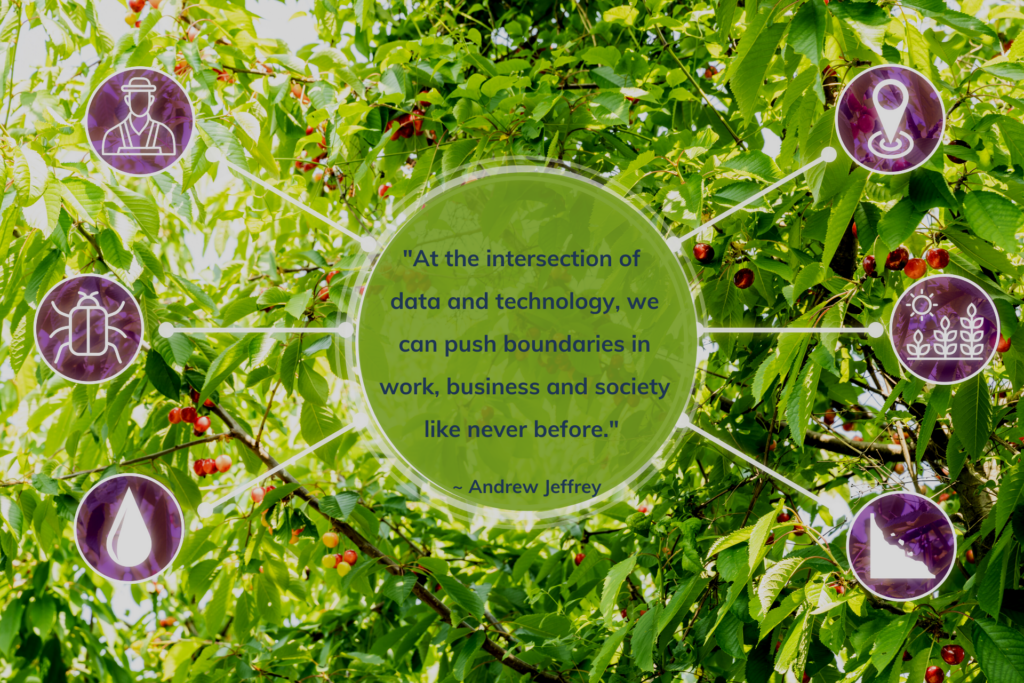
It’s hard to imagine a world without the daily convenience of modern technology. Just yesterday, I joked with my kids about the world before the internet – a time when we actually had to go to the library to look up unknown information. I can still remember the early days of my college career back in the late 90s, the internet had just come out, and we were all getting used to this new phenomenon called a “search engine.” Life has drastically changed over the last 25 years. Now, nearly all the information we want and need is at our fingertips. Today, we have more access to data than most people know how to handle. Data is all around us, collected through the day-to-day actions and reactions of our lives. When we take the time to intentionally analyze, interpret and distribute the data metrics available to us, we can make smarter and more efficient decisions. There is so much to explore, and while our increased access to data is pretty interesting, the reality is that the combination of data and modern technology can change the world. Like many things, though, there are two sides. Sure, industrial companies can capture huge amounts of data, but it also raises the question: now what? How do you put all that data to work? Breaking barriers and pushing boundaries At the intersection of data and technology, we can push boundaries in work, business and society like never before. Data insights allow us to be more precise and accurate in our day-to-day work, which allows us to be more effective and efficient. The operational benefits here are endless, including improved quality control, reduced energy consumption, enhanced safety and increased operational consistency. Just take a look at the food industry, for example. Many field workers in smart agriculture rely heavily on data insights to control, predict and create the best environments for quality crops and harvest. The more accurate their predictions, the better their harvest, and the better their harvest, the faster we receive our food through the supply chain. Today, internet of things (IoT) technology can connect remote and mobile assets, like a tractor, for instant data access, making it easier for farmers to be more efficient and effective in their work. It’s really amazing when you think about it. Data is transforming how we operate in this world, creating better environments for us all. The FreeWave impact At FreeWave, we are constantly pushing the boundaries of technology to create faster, smarter and more efficient work environments. I’ve been a part of the FreeWave team since 2019, and I am constantly amazed at the ways our technology provides innovative solutions for real-world issues. Our products enable our customers to improve their work processes, and through our single pane of glass approach, we offer a simplified experience for businesses and industry leaders to receive automated technology that transforms data metrics into real-time execution. One of my favorite use cases to discuss is FreeWave customer that uses drone technology to deliver food and other valuable resources to far-reaching areas across the globe. With FreeWave products, they can run a smarter and more efficient operation. Their robotics delivery system is combating many of the complex access challenges the world faces on a daily basis. Our IoT technology is helping them solve complex issues with simplified tech solutions, and simple solutions create more time, energy and space to focus on what matters most: people. If you need a product to help you bridge the gap between technology and data, FreeWave is your solution. We are enablement partners, helping every one of our customers accomplish their complex goals. It’s inspiring to work with brands and businesses striving to create a difference in real-world issues. Our technology plays an intricate role in sustaining work environments and supporting entire industries around the globe. Data makes the difference At the end of the day, data is more than mere statistics; data is the key to our efficiency, productivity and safety. Data makes the difference in energy consumption reduction. Data makes the difference in the overall quality and safety of our daily environments. Data makes the difference in everything. Every day we have the opportunity to use data to our advantage, and at FreeWave, we are helping industrial innovators do just that. As technology continues to evolve, we will continue to provide top of the line IoT solutions that transform data into actionable insights and execution so you can not only access a treasure trove of data, but also know exactly how to answer the age-old question: now what?
Data is everywhere, even on Mount Everest: Sensor-to-cloud and extreme environments
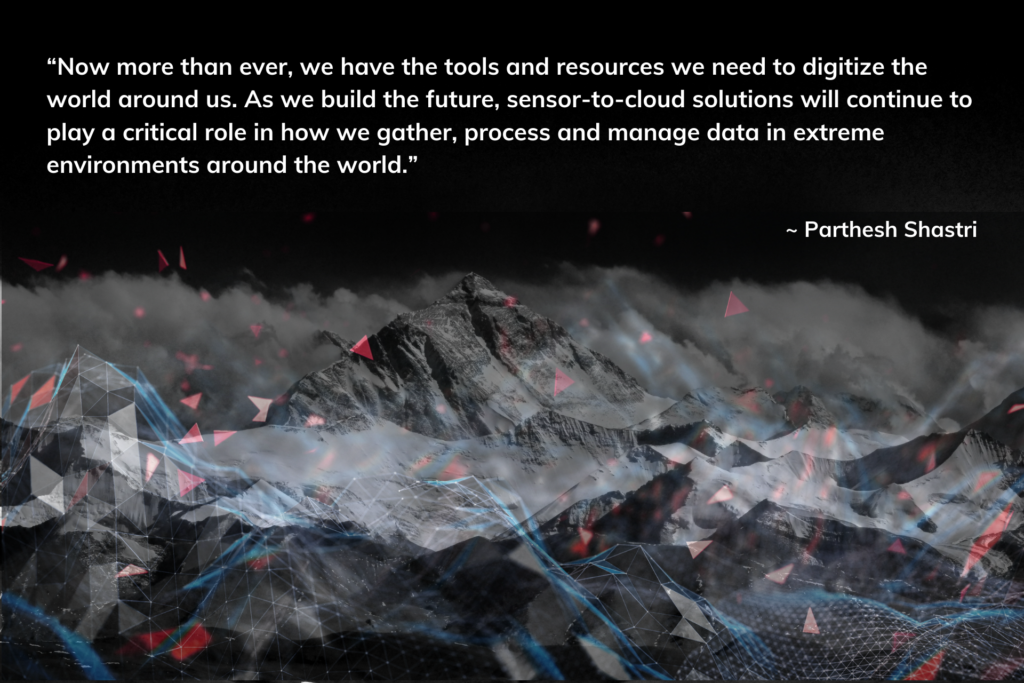
Technology – from Mount Everest to the farm It’s amazing what technology can do when paired with human will. Just a few years ago, a team of scientists made history as they trekked up Mount Everest with the goal of running environmental studies. With backpacks full of sensors (which included FreeWave technology), these men pushed boundaries to create a new normal. When we intentionally use modern technology to our advantage, we can create better, safer and more productive environments within every industry. Today, the same technology used on Mount Everest is now powering multiple earth science programs transmitting sensor data from remote environments to earth scientists, climatologists and meteorologists through cloud servers. This is just one example of many where sensor-to-cloud solutions have transformed our ability to interact with extreme environments in the modern world. A deeper look at extreme environments Typically, when someone thinks of an extreme environment, they imagine harsh, rugged terrain in a far-off remote location; however extreme environments aren’t limited by this definition. Take a large farm, for example, with a multitude of deployed assets and equipment across hundreds of acres. Traditionally, an operation like this requires an employee to physically check on the farm equipment multiple times a week, manually turning valves on and off, in addition to monitoring and controlling the overall farm environment. These day-to-day tasks are not only time-consuming but physically draining. In this case, the operational output required on the farm makes it an operationally extreme environment, and extreme environments are just one space where sensor-to-cloud solutions shine. Sensor-to-cloud in the real world Today, sensor-to-cloud systems utilize deployed sensors to collect and transmit data from remote locations. These sensors send the gathered information back to cloud servers for further research and analysis, enabling entire teams to utilize their limited time and resources more effectively. With sensor-to-cloud systems, we eliminate the often-laborious mechanics of middlemen procedures so that industry leaders can focus on what matters most. Let’s revisit that farming example. With sensor-to-cloud technology, farmers can automate the repetitive tasks of their operations. Something as simple as discrete soil sensors further allow farmers to virtually monitor their crop health, creating more time and space to focus on other high-value tasks. This gives them time, often an invaluable asset, to do what’s needed. In a sense, we can improve the productivity of an operation with an automated suite of sensor systems. Imagine the difference a network of sensors can make. The FreeWave difference For several years now, FreeWave products have been a leading resource solution for extreme environments. Our sensors were a part of the great Mount Everest expedition, and today, we have deployed sensors in many areas, including pipelines in Alaska, ice shelves in Antarctica, smart farms across the country and many other locations – rugged and traditional. We are providing the groundbreaking technology needed to monitor data in extreme environments so that our partners and customers can make the best, informed decisions for their operations. As the Chief Technology and Product Officer at FreeWave, I am constantly amazed at the impact our products have on the world. We are working with some of the major brands of our time, helping them solve massive problems affecting society at large. Our technology solutions serve entire industries, like oil and gas, agriculture, transportation and traffic, as well as many others that contribute to the well-being of the globe. It is great to be a part of a company where we can say our products are a part of the solution for life’s essentials. Every day, we help industry leaders identify their pain points and provide them with a single pane of glass product solution that helps them see the data wherever they are without the drain of additional resources. Our rich portfolio of radios, gateways, cloud software and analytics allows us to stitch together a range of packaged ready to use applications that solve our customer’s problems through simple, turn-key solutions. Sensor-to-cloud in the future Data is everywhere, and now more than ever, we have the tools and resources we need to digitize the world around us. As we build the future, sensor-to-cloud solutions will continue to play a critical role in gathering, processing and managing data in extreme environments around the globe. As I look at the world before us, I see endless opportunities to continue to leverage technology and data to build a better and more informed life.
The Importance of Data in the Life of Bees
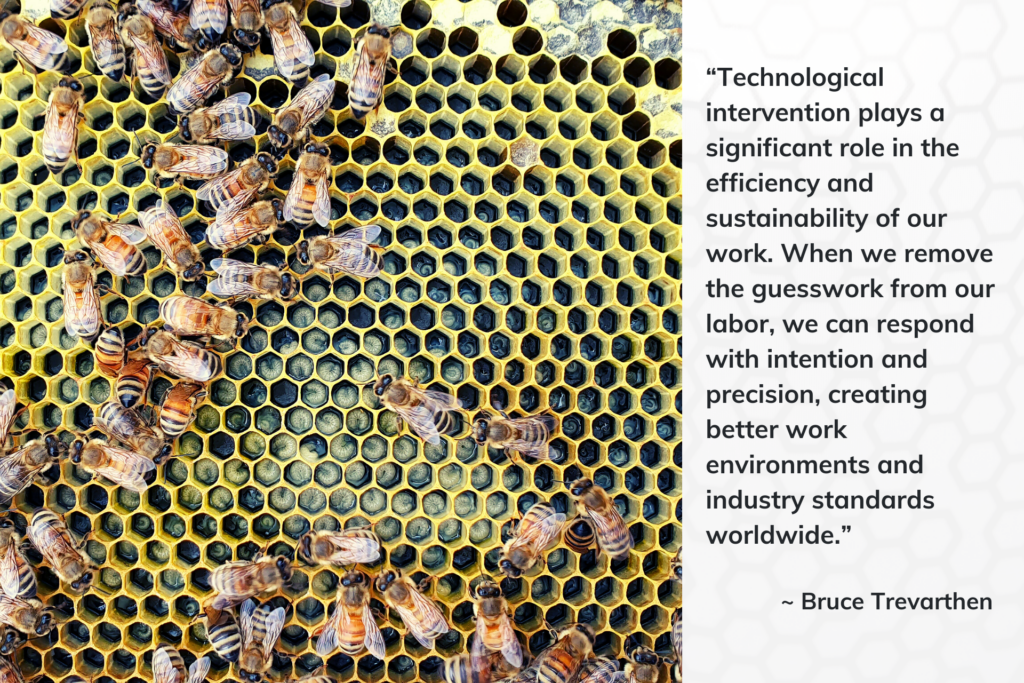
Have you heard the buzz? Data is everywhere, informing, influencing and affecting the direction and decisions of our lives daily. Due to modern technology, we now have access to a world of knowledge that was otherwise unavailable just 50 years ago. This data is gold, and when we intentionally utilize technology to mine and refine it, we can create a more sustainable world. Industrial internet of things (IIoT) technology makes a sizable and sustainable difference in multiple industries – including apiculture, the business of beekeeping. Much to my surprise, I learned that taking an intentional approach to data collection and distribution profoundly impacts the lives of bees and surrounding societies. Data and beekeeping In 2019, I went on a mission with my company ModuSense to create an IIoT solution that could aid specific industries with several deployed assets in need of environmental monitoring. After exploring applications in forestry and horticulture, our journey led us to apiculture farming and the high value commodity of honey. I believe in fully immersing myself in business and technology, so I became a beekeeper to understand the complexity of the apiculture industry better. Beekeeping is a high-value asset in New Zealand and Australia, almost exclusively because of the manuka honey variant. While traditional clover or bush honey may earn between $4-6 dollars a kilo, manuka honey can earn as high as $200 a kilo, making every drop critically important. Proper hive monitoring is essential for quality production, but beehives (especially the manuka variant) often grow in difficult terrain within remote locations, making them challenging and expensive to access regularly. Without IIoT technology, beekeeping is a naturally complicated process. Oftentimes, beekeepers must utilize helicopters to deploy and check on their hives, which is time-consuming, expensive and challenging. However, with the right IIoT solutions, such as sensors that monitor hive conditions, the beekeeping process is simplified, increasing productivity and overall harvest quality. With access to the right data, beekeepers don’t have to check on the internal conditions of their hive manually; instead, they can manipulate and control the hive’s environment from afar through sensors to create optimal conditions for production.This IIoT technology is helping us augment the beekeeping process through effective data monitoring, which is ultimately creating a simpler and more sustainable approach to hive operations. Simple solutions In many ways, beekeeping is quite similar to dairy farming, meaning better environments create better products. When cows receive access to the best pastures, they inevitably produce better milk which then creates better dairy products for us to consume. The same is true in the life of bees. When bees intentionally receive access to the best environmental conditions and quality nectar, they are able to become high-strength, crop-ready colonies which naturally produce a high-quality harvest. Effective regulation of the bees’ environment is critical to ensure the best yield, and this is where IIoT technology is making a world of difference in the apiculture industry. Bees are incredibly sensitive to barometric pressure, humidity and temperature, all of which play a role in their ability to produce as a colony; bees also need to maintain a central weight to operate at peak performance. As such, the best way to ensure a quality harvest from a beehive is to maintain the colony’s weight and manage the hive’s temperature. With proper data insights, we can do this remotely by studying and monitoring the internal collective health and conditions of the hive. Without lifting the hive’s lid, which disrupts the harvest process, we can virtually control the bees’ environment without the extra cost or time of added deployments. These insights are easy to monitor from a single pane of glass, making critical information accessible faster than a bee can fly (which is pretty fast at 20 mph!). Integrating special IIoT sensors, we developed the HiveBeats Environmental Monitoring Sensor, HiveScale V5 and Brood Monitoring Sensors that now provide precise insights into the life of a bee, which ultimately determine if and when human intervention is needed. This allows for significantly fewer errors to occur and saves time and money along the way. Data connects life – for bees and people At ModuSense, we are proud to develop timely IIoT solutions, including sensor devices, cloud-based data routing, data storage, analysis platforms and connectivity hardware to provide solutions that are easily deployed and ready to fit for purpose. In partnership with FreeWave, we are committed to accelerating hardware and software IIoT development capabilities in meaningful and immediately measurable ways for remote industries around the globe. As the CEO of ModuSense, I am proud of the work we have done to create real-life change in the world of apiculture. Our special sensors enhance the hive cultivation process by extracting critical internal data insights, all while creating a culture of industrial sustainability for beekeepers along the way. We are creating a new way forward by leveraging the power of IIoT technology to monitor data and using that insight to respond with actionable execution. Sustainability is about finding ways to use less to do more and our ModuSense sensors are doing just that for beekeepers around the globe. Today, technological intervention plays a significant role in the efficiency and sustainability of our work. When we remove the guesswork from our labor, we can respond with intention and precision, creating better work environments and industry performance worldwide. I am proud to contribute to this type of change in the life of bees and beyond.
Technology Simplified: Leveraging Data in the New Digital Era
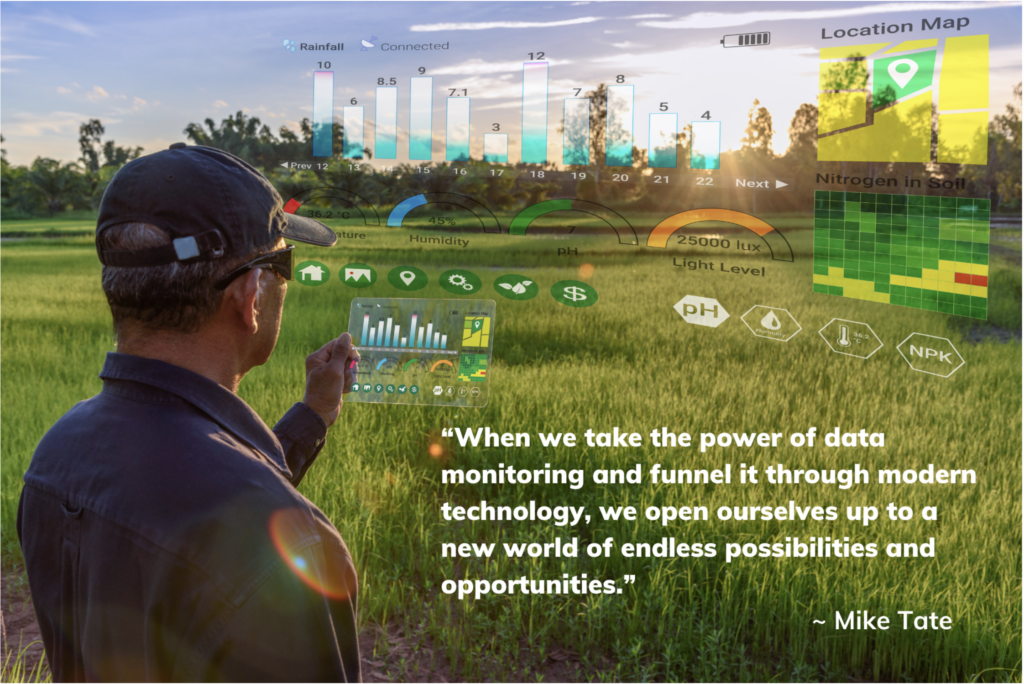
Excited by tomorrow, we face a new world filled with endless possibilities each day. Thanks to modern technology, simple sensors open the doors to our favorite restaurant, edge computing allows manufacturers to spot and correct production glitches before they happen, and high-tech traffic cameras analyze and record thousands of license plates daily to spot stolen and unregistered vehicles while also identifying suspected criminals. It’s no secret that the world is evolving before our eyes, and through the technological advancements of this digital era, we are creating a more efficient world. The power of data Data is a powerful tool of knowledge, and lucky for us, it’s everywhere! Every one of our actions is driven by a manual process of data – like the simple act of putting on a jacket when it gets cold, or an automated process of data – like a valve instinctively shutting off when a water tank gets full. Today we have the technology to effectively process, analyze and distribute data metrics in tremendously impactful ways. What does greater simplification look like for industrial leaders? Remote operations simplified When leveraged effectively, industrial internet of things (IIoT) solutions take remote operations to the next level, simplifying the work process for teams and industries across the globe. Think about some of the most popular high-value remote assets today, like drones, video surveillance, or even center pivot irrigation systems – these entities perform so well because they do what humans can’t. In mere seconds, IIoT technology can process, distribute and respond to data that would otherwise take an entire team hours, days or even weeks to achieve. In the not so distant past, industrial operations relied solely on data consumption (i.e., how much water is in the tank; what temperature is the water), but today, advancements give us the ability to respond nearly instantaneously to that collected data with actionable execution. Today we can view and control the management of an entire operation remotely on our cell phone. We can see how much water is in a tank or what temperature that water is at and automatically change and adjust the water levels and temperatures from near or far. As a result, the amount of time, resources and energy needed to run businesses has transformed entirely, and this evolution allows us to create an enhanced world and standard of work. Simple deployment Remote operations are oftentimes in rugged terrain, making them difficult or even impossible to access. At FreeWave, we solve this complex issue by providing pre-configured ready-to-deploy solutions, complete with everything needed to achieve the mission at hand. For example, through FreeWaves’s joint venture with ModuSense, we’re simplifying connectivity to cloud with a variety of pre-configured and ready to deploy monitoring and sensing solutions by supplying the entire solution with a 12-month data plan, dashboard, 12W rapid recharge solar panel, satellite connectivity and Bluetooth connectivity. You can use your mobile phone to validate the data directly from the gateway without having to wait for satellite transmission. We all know the “gotchas” when it comes to buying technology. Simple deployment means you’re ready from day one, without needing to buy additional components. Real-world impact As Chief Operating Officer and SVP of Global Sales and Marketing at FreeWave, I get a front-row seat to the real-life impact modern-day technology is having on lives, businesses and entire industries. The essentials of life have become simplified, and in the process, more people and businesses receive greater access to the things that matter most like critical information, metrics and potential outcomes. Creating a more sustainable world and preserving natural resources like food, air, energy and water have been at the forefront of IIoT since FreeWave began almost three decades ago when we brought long range, low power consumption, C1D2, 900 MHz connectivity and radio technology products to our customers. Since then, our connectivity options have greatly expanded by adding EDGE Compute, Software, Industry Protocol Conversions, Data Broker & Cloud, a complete end to end solution and with it comes the responsibility for greater environmental stewardship. We’ve all seen the devastating impact an environmental catastrophe, like the 2010 Deepwater Horizon oil spill, can have on the globe. Simple mistakes can and do cause enormous repercussions that affect us all. The truth is, with human interaction there will always be the cost of time and possible room for error. Technology, however, is different, as it allows us to not rely solely on human capacity and depend more on interconnected and advanced systems. Now, we don’t have to wait for someone to run into a situation or crisis and manually pull a lever or travel to turn off a valve. Instead, preprogrammed automation or a simple click of a button or flip of a switch from virtually anywhere in the world can control your high value remote assets. FreeWave is a technological pioneer in the 21st century. We have connected the unconnected with a reliable ecosystem of edge intelligent radios and solutions to optimize the extreme edge of remote industrial operations. Through our single IIoT platform, we provide expanded capabilities for data capture, analysis, control and automation. Our single pane of glass approach provides a simple, single vendor, one-stop-shop solution for remote operations worldwide. At the end of the day, when we take the power of data monitoring and funnel it through modern technology, we open ourselves up to a new world of endless possibilities and opportunities. It’s one thing to have data; it’s an entirely different thing to know how to leverage that data. At FreeWave, we are constantly pushing the boundaries of data monitoring and modern technology through our IIoT solutions and creating a better, safer and faster world of work for industries around the globe.
Smart Farmers Use Data, Do You?
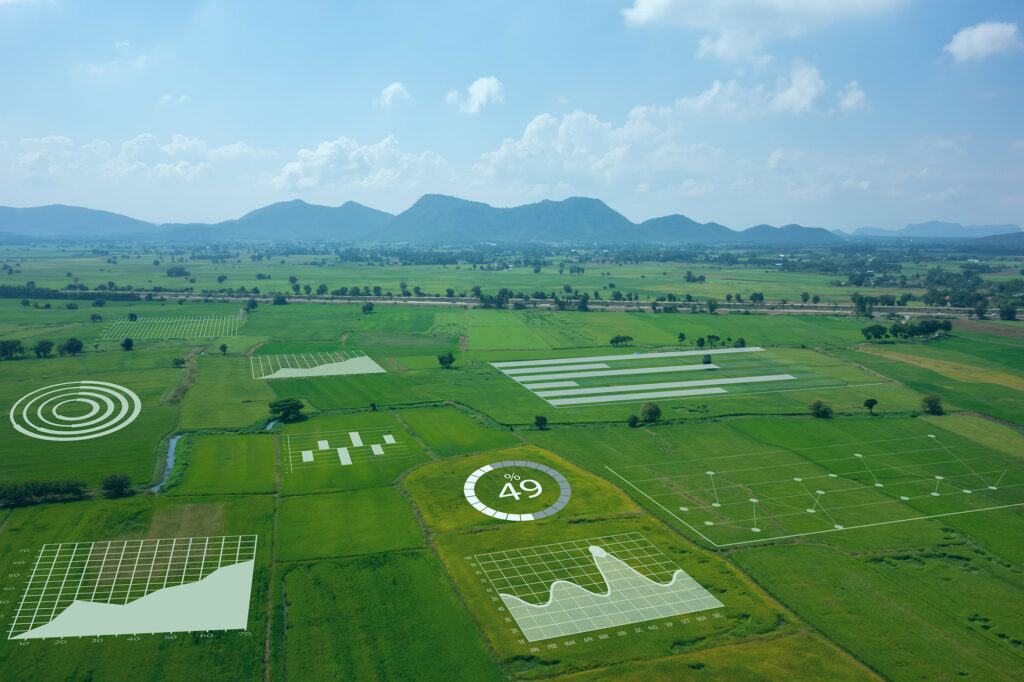
Data has revolutionized the planting, growing, and harvesting of crops on farms worldwide. Here’s why intelligent farmers use data to drive decisions and boost profits. Data, not unlike the introduction of the cotton gin during the Industrial Revolution, is rapidly changing the way farmers make decisions and operate their businesses. It’s not just to save energy or boost profit margins, either. Based on predictions that the population will reach 9.7 billion people by 2050, experts at all levels are looking closely at sustainable ways to increase healthy food production. Tech tools that rely on data are typically the cornerstone of these initiatives. But how do farmers use data exactly? And why is it wise to adopt tech into the harvest cycle? Keep reading to find out. What is data collection in agriculture? Data collection in agriculture is one of the foundational components of smart farming (also called precision agriculture). Relying on technology to gather information throughout the agriculture lifecycle, farmers can narrow the scope of their farming practices and optimize their processes. Examples of data collection in agriculture include: Crop yield data Soil moisture level monitoring Drone or satellite imagery Streamlining and enhancing farming practices Optimal harvest time Why is data critical in agriculture? As the population increases globally, experts look closely at how the agricultural industry can increase healthy food production while remaining sustainable and profitable. Using data to drive decisions and monitor operations helps farmers achieve both goals. How can the IIoT be used in agriculture? IIoT (Industrial Internet of Things) is a term used for the billions of devices worldwide now connected to the Internet. IIoT and automation in agriculture are closely linked to precision agriculture and data collection on farms. Data is typically collected via IIoT-connected sensors and tools that compile, sort, and analyze the information. These devices do more than just offer suggestions, too. Many are autonomous, which frees up farm owners to focus on the big picture of their operation. How are data and analytics transforming agriculture? Here are some ways data is revolutionizing how we plant, grow, and harvest healthy food. Off-Site Crop Production Data From the time seeds are planted to when the optimal time comes to pick a fruit or vegetable, data is changing how—and where—farmers work. Farmers no longer have to be on-site to make critical decisions. Instead, using a computer or even a smartphone, they can execute decisions from home. Healthier Soils Using drones and other imagery technologies, sensors determine soil moisture levels and overall health from the air. This not only improves the quality of the end product but makes farming more sustainable too. Soil erosion is a considerable worry in the eyes of environmentalists, who say monocropping is responsible for soil erosion in America. For example, topsoil levels in Iowa have shrunk by as much as 50 percent in Iowa, one of America’s biggest producers of corn, soybeans, and oats. One solution to this is to regularly rotate plantation sites, which data collection can help identify. Strengthened Supply Chains Food waste at the farm level is an oft-overlooked issue. Many believe waste only happens at the grocery store or once consumers take produce home with them. But one study found that as much as 30 percent of food never leaves the farm and is simply left there to decompose. Increased supplier and shipping costs and blemishes or imperfections on produce are two reasons this happens with alarming regularity. Collecting data helps farmers harvest at the optimal time and identify outlier products early in the growth cycle, making their practices more efficient. Is IIot the future of agriculture? Yes, assuming you don’t already consider IIoT the “present” of agriculture, too. Tech experts believe the IIoT will bring farming practices to the next level, making them streamlined. For example, crop-picking robots that determine ripeness and readiness of produce are becoming a regular thing on farms across America. As price points for these devices decrease, they will likely become ubiquitous. The IIoT plays an integral role in getting crops to the point that they’re ready for robots to harvest them. And as more robots, drones, and sensors are placed on farms worldwide, more data will be available to farmers to make critical decisions that lead to more products using fewer resources. What are the limitations of agriculture data systems? One of the significant limitations of agricultural data systems is a lack of connectivity in remote areas. Collecting data is essential, but if farmers can’t access the information in real-time, the data is less effective and may still lead to delays or costly errors during the growth cycle. Fortunately, FreeWave’s agricultural solutions can solve connectivity issues in the harshest and most remote environments, so farmers never have to worry about accessing their data in real-time. Infuse intelligence into your agricultural operations today with FreeWave. Click here to learn more.
Five Ways to Improve Agricultural Efficiency With IIoT

The IIoT benefits farmers and their products substantially, especially regarding how efficient growth cycles can become. Learn more in this article. It’s estimated today that half of the organizations in the agriculture sector have adopted IIoT capabilities, according to Inmarsat Research. Even those who have yet to buy-in, largely agree that the Industrial Internet of Things (IIoT) is quickly revolutionizing how farmers grow food and people gain access to healthy food on a global scale. Increased efficiency is one of the main benefits causing farmers to switch to tech-enabled smart agriculture. Below, learn why smart agriculture is quickly becoming ubiquitous, as well as five ways these tools can optimize crop yields, increase profits, and simplify the farming process end-to-end. What Is Smart Agriculture in IIoT? Smart agriculture as it pertains to the Industrial Internet of Things (IoT) is the process of fine-tuning and optimizing the product cycle using digital tools. These devices work synchronously to gather data and deliver critical insights that can be carried out by the technology itself or at the farmer’s discretion. What are the Various IIoT Tools for Agriculture? IIoT agricultural tools include, but aren’t limited to: Crop management devices that collect data such as precipitation levels, temperature, and soil quality. Agricultural drones that determine soil health from up above distribute localized pesticides and more. Cattle health monitoring and management devices. Greenhouse automation systems. End-to-end farm management systems. How does IIoT Impact Our Lives Through Agriculture Automation? It provides larger quantities of natural food for a growing population. It lowers farmer production costs, which passes on savings to consumers. It increases product standards, creating healthier food at lower price points. It keeps workers safe and allows them to work efficiently. It enables farmers to grow their business safely and effectively, with far less risk than previous years. How to Use IIoT in Agriculture to Improve Efficiency (5 Ways) Here are five ways the Industrial Internet of Things can be deployed in agriculture to improve efficiency. 1. Monitor Climate Conditions The use of sensors is one of the keys to well-executed precision farming (or precision agriculture), which is the art and science of making accurate decisions based on data. Often, climate sensors are the first piece of IIoT tech implemented in an agriculture setting. These devices monitor climate conditions, soil quality, pesticide output, and other vital levels to help farmers increase yield using fewer resources. 2. Implement Tools that Reduce Production Risk One of the significant advantages of IIoT in farming is the early identification of issues that could otherwise be missed or overlooked due to human error. This lowers production risk and gives farmers a better idea of what their harvest will look like months in advance. Lower production risk gives farmers better control over product distribution, ensuring they acquire buyers early enough in the season and don’t wind up with unsold products. 3. Use IIoT Agriculture Tools that Lower Cost and Reduced Waste IIoT capabilities reduce operational costs for farms of all sizes. More accurate data boost output without increasing staffing—and healthier, more robust crops yield better profit margins, too. According to Inmarsat, lower operating costs have created a more sustainable farming practice for 37 percent of farmers. 4. Use Technology to Elevate Crop Standards With a firm grasp of the production process and more data to conclude from, farmers can use IIoT devices to produce healthier, nutrient-dense food. A higher standard yields better profits, as well as reputation and growth capacity. This is true for the product of fruits, vegetables, and even cattle. Whatever the product, intelligent agricultural tools help farmers identify outliers, address localized issues such as pest infestations, and deliver those signals (or an appropriate intervention) before it’s too late. 5. Use Mobile Devices That Allow for Flexible Work Gone are the days where farmers had to be on-site throughout the entire grow cycle to ensure the health of their products. Thanks to mobile devices that utilize edge solution technologies, farmers can access information remotely from a smartphone or application. Because many devices work autonomously, the number of decisions farmers must make in general has also been drastically reduced with IIoT technology. What are the Challenges of IIoT In Agriculture? As it stands, the significant challenges of IIoT in agriculture relate to robust internet connectivity in rural areas and elevated hardware costs. Fortunately, though, affordable solutions like ours use rugged hardware and even satellites to provide farms with the power they need to stay connected. The growth of IIoT tech in agriculture (and all sectors) is all but inevitable in the coming years, though. So these current challenges may become nonissues faster than many would expect. Visit our site to learn more about FreeWave’s Smart Ag solutions: https://www.freewave.com/industries-applications/precision-agriculture/.
A Starter’s Guide to IIoT and the Fourth Industrial Revolution (aka Industry 4.0)
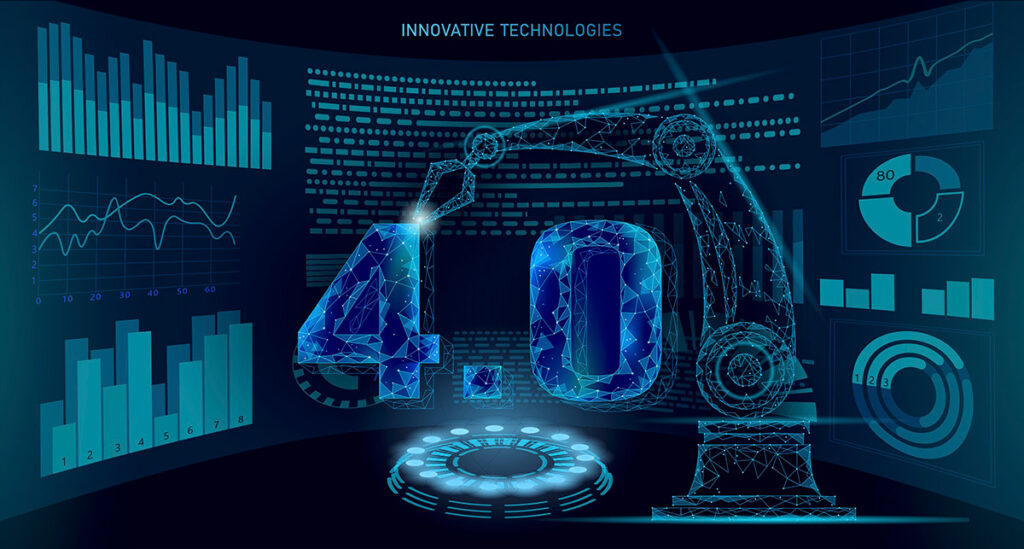
Industry 4.0 is revolutionizing how businesses operate and manufacture products. In this guide, learn how the IIoT plays a considerable role in this movement. The Fourth Industrial Revolution, or Industry 4.0, is a term many use to describe the new way products are created and sold thanks to technology, specifically the Industrial Internet of Things (IIoT). Depending on who you ask, we’re right on the cusp of Industry 4.0—or smack dab in the middle of it. While there’s no set definition (the term was originally used for a German initiative in 2011 and has significantly evolved), manufacturers still need to understand how the Fourth Industrial Revolution could impact their business. This starter’s guide will help you understand the critical points about IIoT and Industry 4.0. What Is the Fourth Industrial Revolution? The fourth industrial revolution, or Industry 4.0, is an evolution of manufacturing that enables automation. In short, it’s the marriage of physical production with intelligent technologies. Industry 4.0 builds off the back of industry 3.0 (which began in the 1970s). As a refresher, here are some of the manufacturing advantages that came out of each of the previous Industrial Revolutions: Industry 1.0– mechanization, the introduction of steam and water power Industry 2.0– electrical power that enabled mass production Industry 3.0– tech and electronics make mass production easier, increase efficiency Think of Industry 4.0 as relying more heavily on technology to take manufacturing to the next level. No longer is tech being used in conjunction with people but as the focal point of the operation. The IIoT and Industry 4.0 The industrial internet of things (IIoT) refers to the network of billions of devices (literally) equipped with sensors, monitoring devices, and other technologies that power applications and drive decision-making in industrial settings. Connected capabilities and real-time feedback through sensors are considered major elements of the Industry 4.0 movement. Examples of the IIoT being a part of Industry 4.0 include: The automotive industry relying on industrial robots for manufacturing The oil and gas industry using remote sensors to identify pipeline problems The agriculture industry using industrial monitoring devices to check soil levels and improve yields with harvest automation Even utilities like water and electricity benefit from the IIoT’s capabilities. (For example: see how FreeWave’s capabilities brought 50 percent savings to Sangamon Valley Public Water District in Illinois.) Occasionally, you may find an “IIoT vs. Industry 4.0” debate online, but it isn’t an either-or discussion. The IIoT is a major strategic component of the greater Industry 4.0 movement. The two terms are sometimes confused because they both focus heavily on improving manufacturing processes. Benefits of the IIoT in the Industry 4.0 Movement Adopting technologies that fall under the Industry 4.0 umbrella can be quite valuable for a business. Tangible benefits include: Improved productivity and efficiency Lower operating costs Simpler compliance procedures Improved safety in work environments, especially in dangerous work settings Adopting an Industry 4.0 model also allows leaders to innovate in their field and potentially move ahead of the competition. Below are two specific examples of how the IIoT can improve a business’s operational efficiency and boost its bottom line. Edge Computing IIoT edge computing gives time-sensitive operations predictable, safe analysis from a remote location without a central network system. For example, in the case of an offshore oil rig, a loss of signal could result in expensive repair costs or even security threats. Edge computing uses low-power devices to send vast amounts of data, allowing employees to make decisions from a safe, remote location. Machine Learning, AI, and Predictive Technologies Big data poses endless opportunities for improvements in the manufacturing process. For example, it can improve supply chain management and enable the personalization of products without increasing costs. The problem is, data needs to be organized and usable. Tools like machine learning and AI can sift through and collect data for business leaders and make highly accurate decisions using predictive technologies. What’s Next for the IIoT and Industry 4.0? As it stands, the future of Industry 4.0 is pretty easy to sum up: those who make the switch stand to make significant savings and increase efficiency. Those who don’t adopt Industry 4.0 models risk facing substantial hurdles, especially related to operating costs. When your competition starts using the Industry 4.0 model and can produce a better and faster product for less, that could spell trouble. Most estimates show the IIoT will grow by billions of devices each year for at least the next five years. Of course, each industry will be affected a little differently based on how quickly they adopt the principles of Industry 4.0. Still, the consensus is that this massive network of tiny devices is here to stay—and therefore should be considered carefully by business leaders.
15 Benefits of Embracing IIoT and Automation for Manufacturing
The Industrial Internet of Things helps leaders thrive in crowded and even dangerous markets. Here are 15 benefits of embracing IIoT for manufacturing. Embracing the Industrial Internet of Things (IIoT) for manufacturing is one way to win in highly competitive or dangerous markets. Automating production and relying on high-tech sensors to give you crucial feedback not only benefits your bottom line but it also benefits those who work for you. Here are 15 benefits of embracing IIoT and automation for manufacturing. 1. Cost Savings IIoT connectivity reduces manufacturing operation costs by: Reducing on-site staff requirements needed for measurements Reducing energy costs Reducing maintenance costs Improving system efficiencies and eliminating bottlenecks Identifying bottlenecks and problems Making any switch can feel uncomfortable for a business, but your bottom line stands to improve from the decision to embrace IIoT for manufacturing. 2. Continuous Monitoring Billions of dollars are lost each year due to downtime, errors, and faulty production in manufacturing. Fortunately, IIoT technology offers continuous monitoring, which alerts you the moment something goes awry. This is another way to save money and reduce the potential for on-site injuries. 3. More Efficient Systems IIoT computing systems move data to the edge, freeing up your on-site devices to collect more information with less power. The future of IIoT and edge computing is even brighter, as more real-time data will be available for extraction, and data will be easier to customize. 4. Improved Production Flow Communication is the key to streamlined production, and it’s simply a fact that computers equipped with high-grade sensors communicate better (and more efficiently) than people. Every aspect of production stands to improve with IIoT making real-time decisions. 5. Mobility Each IIoT item offers a virtual component (along with security features to protect your data). Experts expect that over 50 billion devices will be connected by 2022, which gives your company the ability to do more with its data and mobility by embracing IIoT for manufacturing. 6. Predictive Technologies Newer IIoT connectivity tools come with sensors and wireless transmission capabilities that draw vital conclusions about your manufacturing processes. The longer they run, the more refined their analyses become, identifying more minor bottlenecks and streamlining processes of which you’re probably not aware. 7. Personalization As the Industrial Internet of Things grows, the possibilities for personalization will too. For example, you can customize aspects of your inventory and supply chain management to help your business run smoother. 8. Improved Safety IoT allows manufacturing employees to be off-site while they work. It also ensures continuity in the event of disaster or disruption. This is especially helpful for industries where manufacturing may be dangerous (steel, certain foods, etc.). 9. Improved Customer Service In business, giving customers what they want at the right price is critical. Intelligent devices that automate your work and derive key insights to improve efficiency help you narrow down what you do, do it faster, and perform the job at a higher quality for your customers. 10. More Business Opportunities IIoT frees up time on the manufacturing floor to expand the business. It also allows manufacturers to create new products and pivot or include new services for existing customers to promote retention. 11. Thrives In Competitive Industries The larger and more competitive the industry, the stronger IIoT becomes. For example, IIoT tools in oil and gas free up data to provide critical insights at drilling sites without employee monitoring. Manufacturers can use this data to improve yields, prevent injuries, and lower operational costs, which could save hundreds of millions of dollars. 12. Cut Out Processing Time Manufacturers used to send all their information to a central location for processing. Today, though, the IIoT skips this step altogether without tearing down your network. Amazingly, it also doesn’t require you to replace existing infrastructure. Believe it or not, FreeWave’s industrial manufacturing IIoT solutions can reduce existing bandwidth up to 95% with no drop-offs in quality or transmission time. 13. Ensures Compliance OSHA violations can cripple a manufacturing business. The IIoT promotes a safer environment that helps you stay OSHA-compliant no matter the industry. 14. Improved Maintenance Scheduling Human error is a common factor that leads to serious manufacturing problems. For example, inconsistent or lax maintenance schedules could lead to expensive repairs or injuries. IIoT automation takes this off your business’s plate entirely. 15. Marketability Today, many customers understand the benefits of IIoT and seek it out when shopping for manufacturers. This is one reason experts expect IIoT in manufacturing to surpass $1 billion by 2026 globally. Manufacturers can stay ahead of their competition and even grow their business by offering better and faster data. Are you ready to take the next step in your manufacturing operations with IIoT? FreeWave wants to help. Get in touch with us today.
Increasing Healthy Food Access and Improving Yields With Harvest Automation

Increasing Healthy Food Access and Improving Yields With Harvest Automation What is automation in agriculture, and how are farmers using robots and other technologies to streamline food production? Our guide explains it all. From farm to table, technology in agriculture is quickly becoming an essential part of how Americans access healthy food. Experts anticipate explosive population growth in the coming years, and we expect agricultural automation to increase with it. But how exactly are farmers using harvest automation? And how are they using robots and drones to grow crops safely and cost-efficiently? Here’s an introductory guide to the state of automation in farming today: What Is Automation In Agriculture? Automation in agriculture relies on technology to streamline and optimize the process of food production in traditional farming. From drilling to planting to harvesting crops, automated farming technology is becoming more prevalent at all levels of the growing process. In 2017, TechCrunch estimated that $1.7 billion had been invested in automation farming technologies, a considerable increase from just a decade earlier. How Can Farming Be Automated? Automated farming tools aren’t only used for harvesting crops. Here are just a few examples of how technology is utilized throughout a season: Robotics are deployed to seed and weed areas of a farm. Computer sensors help identify problem areas, which reduces large-scale pesticide use in areas that don’t need it. Drones monitor weather conditions, assess soil states, and even render decisions without contacting the farmer. Beyond the farm and into the warehouse, forklifts are being replaced by automated guided vehicles (AGVs), which can load and unload food trucks, transport items across warehouses, and operate in cold storage climates for longer than human workers can. How Has Automation Affected Agriculture? Automation relies on remote sensors and other tools to more efficiently grow, monitor, and harvest crops. Using the Industrial Internet of Things (IIoT), the farmer makes real-time judgment calls unnecessary. Drones and robotic devices can collect data and interact with other computer systems and make critical decisions. For example, tech tools that determine soil moisture levels and seed population are being utilized more frequently. Farmers rely on absolute precision to grow their crops. As automation tools become more adept at maneuvering through agricultural challenges (weather patterns, for example), there’s a strong possibility it will become the go-to way to produce food. Is Automation In Agriculture a Good Thing? There are many advantages to automated farming, many of which are related to the ever-growing population of humans on earth and their need for accessible, healthy foods. The UN expects the world’s population to grow by 2 billion people between now and 2050. With a world population of just under 10 billion, it’s more important than ever to think critically about how the farming industry can adapt to the growing number of hungry mouths to feed. Here are some of the advantages and drawbacks of farming automation. Advantages of Agricultural Robots Lower labor costs (improves yields in less time) Provides more food at affordable costs to consumers A potential solution for growing population concerns Trustworthy technology simplifies the job a farmer has to do Enables farmers to hire less staff, giving them wider profit margins Less human error Drawbacks of Agriculture Robots Initial technology investment costs can be steep Potential trust issues with evolving technologies Maintenance costs High energy requirements The Future of Harvest Automation With a more than 30-year decline in the farming job industry and an apparent need for large-scale food development solutions, it’s pretty clear that harvest automation is here to stay. The recent COVID-19 pandemic has forced many American industries to take a hard look at artificial intelligence devices for food production. Going forward, more precise tools will emerge that make a farmer’s job easier and more profitable. Artificial intelligence will continue to improve, and both consumers and landowners will benefit from the round-the-clock abilities of field technology that no farmhand can match. Check out how our Industrial IoT Edge Platform can transform your operations today.
IIoT For Electric Utilities: The Past, Present, and Future

Electric companies are poised to become future IIoT leaders. Here’s why. Primarily driven by Advanced Metering Infrastructure (AMI), the Industrial Internet of Things (IIoT) has fundamentally changed electric utilities. Technologies that let devices act as two-way communicators between consumers and utility providers paved the way for new opportunities. Digital transformation is here, and businesses have to reinvent themselves to stay competitive and relevant. Still, many electric utility providers aren’t ready to leap into Industrial 4.0. Why? Because adopting and integrating smart tech into legacy IT and OT infrastructures can seem daunting. Learning new skills is challenging and takes time, and potential setbacks, like unplanned downtime, can leave utility leaders fearful. Many utility leaders are riddled with doubts regarding the technological uncertainties of IIoT. It’s understandable. With rapid growth come growing pains. The IIoT journey from uncomplicated AMI to vast, smart grid expansions is challenging. Urbanization is quickly expanding, energy prices constantly fluctuate, legislation is always changing, and sustainability is paramount. Because of this, utilities must refine their operations to meet evolving consumer demands for sustainable, affordable infrastructures. IIoT adoption won’t happen overnight, but you have to start somewhere. Here’s how: Introduce real-time monitoring equipment like sensors, readers, and alarms into your operations. And use technology to automate processes, conserve resources, improve outcomes, and eliminate downtime. Still, understanding how IIoT can impact your business is a great place to start. How can IIoT solve your problems? The benefits of IIoT are hard to ignore. Almost no one would balk at real-time data collection or say “no” to monitoring critical system health. Who would pass on the opportunity to improve efficiency and safety? Almost no one. Let’s face it. Competition is stiff, and unhappy customers create churn. Cost and efficiency drive consumers these days. They’ll switch providers with a simple click. Customer churn is inevitable if you can’t provide reliable service. That’s why your technologies must allow you to react in real-time. Seconds count when it comes to your customers. Connecting your devices, sensors, and alarms to the Internet, lets you monitor and utilize data in real-time to: Increase efficiency Use automation Reduce errors Work remotely Enhance security Boost profits Make better decisions These are benefits you can’t afford to miss. Implementing IIoT is a surefire way to open personalized customer communication. IIoT lets you tailor services to specific customer demands. We can’t understate the value of using edge technology and wireless connectivity to remotely operate, analyze, and optimize your electric utility operations. As energycentral.com points out, “utilities who refuse to adapt or change will suffer financial losses, countless preventable maintenance issues, and a waste of resources.” How can utilities lead the next wave of IIoT? IIoT is how power and utility providers will operate in the future (many already are). Traditional energy production and distribution methods are obsolete, and the days of manual processes and zero real-time visibility are over. IIoT is transforming how utilities run vast, widespread, and remote operations, and internet-connected devices and machines are reshaping the ways utilities operate. Technology never stops evolving, and transitioning into Industrial 4.0 and IIoT isn’t an option anymore. The pandemic increased automation and digitization demands, producing a ripple effect that’ll extend into the future of IIoT. Utility companies are partnering with tech companies to create innovative solutions to improve sustainability and become more efficient. As IIoT adoption accelerates, the opportunities to provide amazing service increase exponentially. With IIoT, utilities are proactive instead of reactive. And predictive maintenance through AI lets utilities continually learn and optimize operations. It’s a new era in the power industry. And smaller utilities are outpacing massive corporations. Smaller, more agile businesses are transforming the industry with their smart business models. And these same small businesses pose a threat to established corporations digitally transforming too slow. Providers that embrace IIoT will emerge as utility leaders in the next several years. Put your business and your customers first. You can’t afford to not implement IIoT into your electric utility operations. It’s time to put your business and your customers first FreeWave is second to none when it comes to proven IIoT solutions and making the most of your data. We’re the leaders in edge computing and wireless connectivity. We’ll accelerate your digital transformation. Our technologies are fast, flexible, and easy to deploy. We’ll have you leveraging IIoT, big data analytics, and connectivity to take the guesswork out of your operations in no time. And you can do it all without a complete infrastructure overhaul. You’ve been improving your utility operations for years; why stop now? We want to take your operations to the next level. Get in touch; let’s chat.



